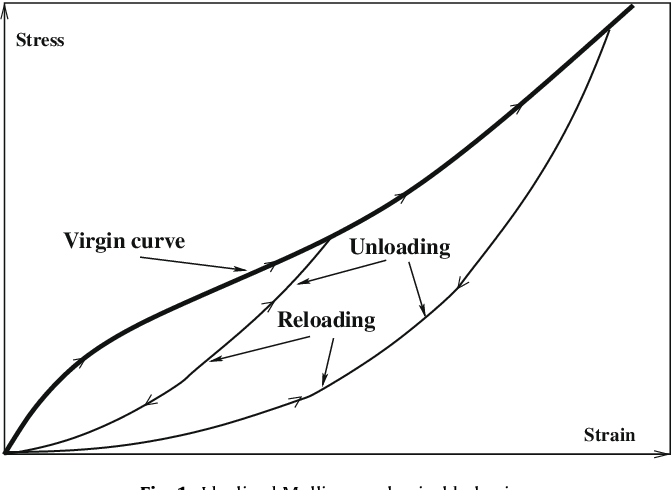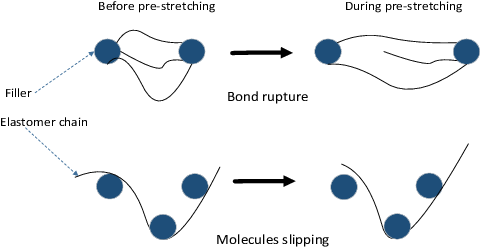The Mullins effect, also known as the Mullins-Schofield effect, is a phenomenon observed in elastomers or rubber-like materials. It describes the change in the mechanical properties of the material upon cyclic loading and unloading.
Specifically, the Mullins effect refers to the softening and irreversible reduction in stiffness of an elastomer after being subjected to multiple cycles of deformation. This reduction in stiffness is due to the permanent rearrangement of the polymer chains within the material, which leads to a loss of mechanical energy upon subsequent loading.
The Mullins effect is particularly significant in elastomers that have been pre-stretched or have undergone a large deformation. In these cases, the material may exhibit a significant amount of viscoelasticity and energy dissipation, leading to a reduction in stiffness and an increase in hysteresis.
The Mullins effect has important implications for the design and use of elastomers in various applications. For example, in engineering applications, it is essential to consider the Mullins effect when designing elastomer components that will undergo repeated loading and unloading cycles. Understanding the Mullins effect can help engineers select appropriate materials and design components that will withstand the expected mechanical stresses over their lifetime.

 (909) 987-1774
(909) 987-1774 Email Us
Email Us







